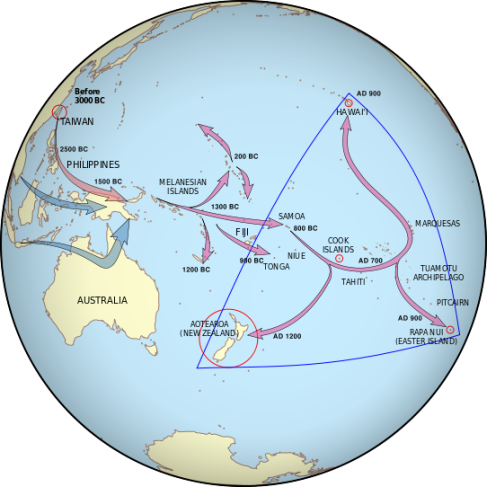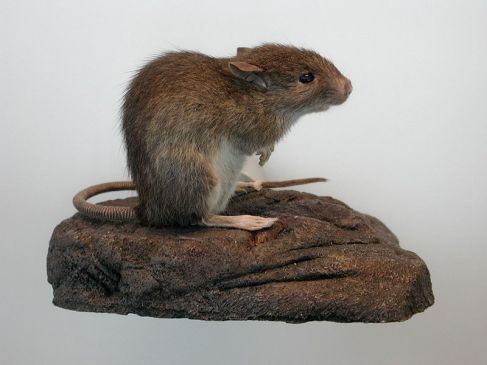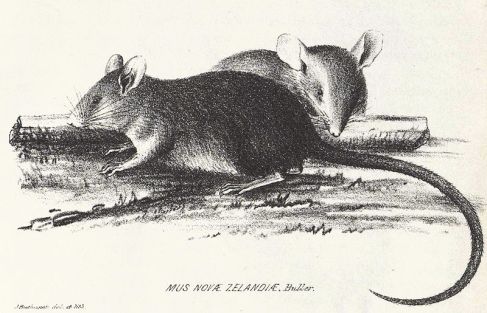The story goes that the Maori people came here in waka (canoes) from a land called Hawaiki. We don’t know for sure where exactly Hawaiki is – we know it’s somewhere in Polynesia – nor where the Maori peoples’ ancestors originally came from.
It is thought that people started to colonise ‘near’ Oceania around 40, 000 years ago, that is the area closest to Asia and Australia – New Guinea, and the Solomon Islands. They gradually began to move east, into ‘remote’ Oceania – Vanuatu, Fiji, Tonga, Samoa and beyond. Their progress was complex, slow, and involved lots of interactions with other populations along the way. This makes it hard to figure out exactly where the ancestors of Pacific people came from. 
This map shows approximate Pacific migration routes and times. Source: Wikimedia Commons
A piece of the puzzle comes from an unlikely creature – the Pacific rat, kiore (Rattus exulans). 
Wikimedia Commons.
Kiore came across the Pacific with the Maori people. The rats were probably brought deliberately, because they were a good source of protein. They are bigger than ship rats (Rattus rattus), and don’t carry disease, so they made for a good feed. The rats did well when they got to New Zealand, because there were plenty of animals with no defences to feast upon.
A study by researchers from the University of Auckland looked at the genetic history of kiore, as a way to gain a better understanding of where Maori ancestors came from. Mitochondrial DNA is passed down the maternal lineage of rats (from mother to daughter) without getting mixed up, like regular DNA does. The rate that mitochondrial DNA mutates is also very regular and predictable. These two features of mitochondrial DNA (that it is preserved from mother to daughter, and that mutations are regular) meant that scientists could look at distinctive sequences, to compare the relatedness of rats from different parts of the Pacific. 
Wikimedia Commons.
Closely related kiore will have the most similar mitochondrial DNA, and mutations can be tracked back through generations, by comparing modern kiore DNA to that of ancient bones.
What they found was that the rats were from three distinct populations. This suggests that there may have been three groups of people, which may have interacted as they migrated around the Pacific.
We still don’t really know where the Maori people originally came from, but at least we have a rough idea of their migration paths from Asia to near Oceania, and eventually to their settlement in the remotest part of remote Oceania.
